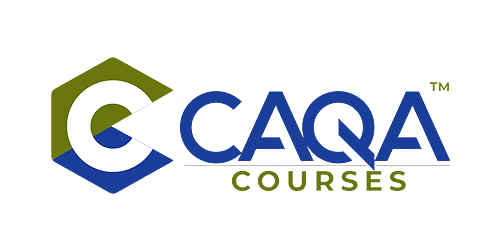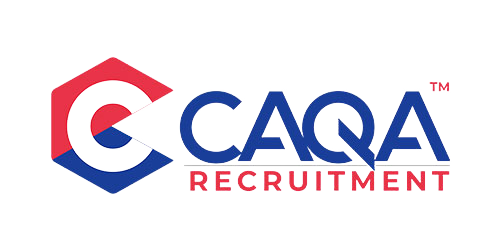While marketed as 'free TAFE,' this taxpayer-funded initiative raises serious questions about efficient resource allocation, completion rates, and restricted student choice in Australia's vocational education sector. This analysis examines how current funding models may be undermining rather than enhancing skills development outcomes.
The current government's "Free TAFE" initiative, while politically appealing and ostensibly designed to address skills shortages and boost workforce participation, demands closer scrutiny regarding its effectiveness, efficiency, and impact on Australia's broader vocational education and training landscape. This taxpayer-funded program, far from being "free," represents a significant public investment that warrants careful analysis of its returns and limitations. As with any major policy initiative, it is crucial to look beyond the surface-level appeal and examine the long-term implications and potential unintended consequences.
A fundamental concern lies in the initiative's restrictive approach to funding allocation. By channelling substantial public resources exclusively through TAFE institutions, the program effectively excludes many high-performing private Registered Training Organisations (RTOs) that have demonstrated strong track records in delivering quality training outcomes. This artificial restriction on student choice fails to acknowledge the diverse learning needs and preferences of potential students, who may find that private RTOs offer more flexible scheduling, specialised industry connections, or innovative teaching methods that better suit their individual circumstances.
Moreover, this exclusionary approach risks stifling competition and innovation within the vocational education sector. By creating a de facto monopoly for TAFE institutions in certain course areas, the initiative may inadvertently reduce the incentive for continuous improvement and adaptation to evolving industry needs. This could potentially lead to a widening gap between the skills taught in TAFE courses and the rapidly changing requirements of the modern workforce.
The program's effectiveness must be evaluated through the lens of completion rates and cost per completion. When examining these metrics, troubling questions emerge about the return on public investment. The current completion rates in several critical skill areas - including plumbing, engineering, building and construction, aged care, and children's services - suggest that simply making courses "free" does not address underlying issues affecting student success. These issues may include inadequate pre-entry assessment and guidance, insufficient support services for struggling students, or a misalignment between course content and industry expectations.
Furthermore, the focus on course fees as the primary barrier to vocational education may oversimplify the complex factors influencing student enrollment and completion. Other significant obstacles, such as opportunity costs, transportation challenges, or family responsibilities, may play equally important roles in determining student success. A more holistic approach to supporting vocational education students might include targeted mentoring programs, improved career counselling services, or partnerships with local industries to provide work-integrated learning opportunities.
The "Free TAFE" initiative also raises questions about the long-term sustainability of such a funding model. As government budgets face increasing pressures from various sectors, it is essential to consider whether this level of investment in TAFE can be maintained without compromising other critical areas of education or public services. Additionally, there is a risk that the program could create a two-tiered system within vocational education, where TAFE courses are perceived as less valuable due to their "free" status, potentially stigmatising graduates in the job market.
To truly address Australia's skills needs and enhance the effectiveness of vocational education, a more nuanced and flexible approach may be necessary. This could involve a voucher system that allows students to choose between TAFE and qualified private RTOs, performance-based funding models that incentivise both completion rates and employment outcomes or increased investment in career guidance and support services across all types of training providers.
While the "Free TAFE" initiative represents a well-intentioned effort to improve access to vocational education, its implementation and outcomes require rigorous, ongoing evaluation. Policymakers must be willing to adapt the program based on evidence of its effectiveness rather than adhering to a one-size-fits-all approach. Only through such critical analysis and willingness to refine the initiative can Australia ensure that its investment in vocational education truly delivers the skilled workforce needed for the future.
The importance of this initiative cannot be overstated, as vocational education plays a crucial role in developing a skilled workforce capable of meeting the evolving demands of the Australian economy. However, the current implementation of the "Free TAFE" program faces several structural challenges that threaten to undermine its effectiveness and long-term sustainability.
Several structural problems require immediate attention:
- Quality and Contemporary Relevance:
- Many TAFE institutions struggle to maintain current industry standards, leading to a disconnect between the skills taught and those required in the workforce.
- Technological infrastructure often lags behind industry requirements, limiting students' exposure to cutting-edge tools and techniques.
- Limited capacity to deliver contemporary learning experiences, potentially leaving graduates ill-prepared for modern workplace environments.
- Inability to deliver many courses within their scope, resulting in gaps in the vocational education landscape.
- Workforce Development:
- Critical shortage of qualified trainers and assessors, impacting the quality and availability of instruction.
- Limited ability to attract industry professionals to teaching roles, reducing the real-world relevance of course content.
- Resistance from experienced private sector trainers to work in TAFE institutions, often due to perceived bureaucracy and lower compensation.
- Insufficient investment in trainer development and upskilling, leading to stagnation in teaching methods and content knowledge.
- Technology Integration:
- Inadequate integration of emerging technologies in traditional trades, potentially leaving graduates unprepared for evolving industry practices.
- Limited capacity to deliver training in AI, data science, and digital skills, which are increasingly crucial across various sectors.
- Need for substantial course design and delivery innovation to keep pace with rapidly changing technological landscapes.
- Insufficient investment in technological infrastructure, hindering the ability to provide hands-on experience with industry-standard tools.
These challenges highlight the need for a more nuanced and flexible approach to vocational education funding and delivery. The current funding model's inefficiencies become particularly apparent when considering alternative approaches. Opening at least 30% of funding through competitive tender processes could:
- Drive innovation in training delivery by encouraging providers to develop cutting-edge programs and methodologies.
- Improve resource allocation efficiency by directing funds to the most effective and in-demand training programs.
- Enhance student outcomes through provider competition, incentivising continuous improvement and quality assurance.
- Better serve diverse student needs and learning styles by allowing for a variety of training approaches and specialisations.
A more effective approach would reframe the initiative around student-centric principles:
- Provider Choice:
- Allow students to select from all qualified providers, including both public and private institutions.
- Implement transparent quality rating systems to help students make informed decisions about their education.
- Enable informed decision-making through easily accessible performance metrics and outcome data.
- Support diverse learning pathways, recognising that different students may thrive in different educational environments.
- Quality Metrics:
- Establish comprehensive provider rating systems that consider various aspects of educational quality and outcomes.
- Evaluate technology availability and currency to ensure students have access to industry-relevant tools and resources.
- Assess trainer industry recency to ensure instructors have up-to-date knowledge and skills.
- Monitor learning management system functionality to support effective online and blended learning experiences.
- Track completion rates and employment outcomes to measure the real-world impact of vocational programs.
- Innovation Support:
- Allocate specific funding for technology development to keep vocational education at the forefront of industry practices.
- Support curriculum modernisation efforts to ensure course content remains relevant and valuable.
- Enable cross-sector collaboration to leverage expertise from various industries and educational institutions.
- Foster industry partnerships to align training with real-world needs and provide students with practical experience.
The current economic climate makes efficient allocation of public training resources more critical than ever. With university sector challenges and increasing economic pressures on families, vocational education's role in workforce development becomes increasingly vital. However, artificially restricting delivery to TAFE institutions potentially undermines rather than enhances this important function.
Looking ahead, several reforms could significantly improve the program's effectiveness:
- Funding Reform:
- Open competitive funding processes to encourage innovation and efficiency across the vocational education sector.
- Implement performance-based allocation to reward providers that demonstrate strong student outcomes.
- Support innovation and development through targeted funding for research and program development.
- Enable student-directed resource allocation, allowing funding to follow student choices.
- Quality Framework:
- Develop comprehensive provider rating systems that consider multiple factors of educational quality and outcomes.
- Implement transparent performance metrics that are accessible to students, employers, and policymakers.
- Support continuous improvement through regular assessments and feedback mechanisms.
- Foster industry alignment by involving employers in curriculum development and assessment processes.
- Technology Integration:
- Support digital transformation initiatives across all vocational education providers.
- Enable new technology training development to keep pace with emerging industry needs.
- Foster innovation in course design, encouraging the use of virtual and augmented reality, simulation, and other cutting-edge educational technologies.
- Support trainer upskilling to ensure instructors can effectively utilise and teach with new technologies.
- Student Support:
- Enable informed provider choice through easily accessible information and guidance services.
- Support diverse learning pathways, recognising that students may need flexibility in their educational journey.
- Enhance completion support services to improve retention and graduation rates.
- Focus on employment outcomes by strengthening connections between education and industry.
The path forward requires moving beyond the simplistic "Free TAFE" narrative to develop a more sophisticated approach to public investment in skills development. This approach should:
- Recognise and support quality providers across all sectors, leveraging the strengths of both public and private institutions.
- Enable student choice and agency, empowering learners to make informed decisions about their educational pathways.
- Foster innovation and improvement through competitive funding and support for research and development.
- Focus on measurable outcomes, including completion rates, employment success, and long-term career progression.
- Ensure efficient use of public resources by directing funding to the most effective and in-demand programs.
By adopting these principles and implementing targeted reforms, Australia can transform its vocational education system into a dynamic, responsive, and effective engine of workforce development. This approach will not only benefit individual students but also contribute to the nation's economic resilience and competitiveness in an increasingly complex global landscape.
A truly effective public investment in skills development must prioritise quality, efficiency, and student outcomes over institutional preferences. By opening funding to all qualified providers and implementing robust quality frameworks, we can better serve both students and taxpayers while building the skilled workforce Australia needs.
This doesn't mean abandoning public provision but rather creating a more dynamic and responsive training system that leverages the strengths of all quality providers. The focus should shift from institutional protection to student success and workforce development outcomes.


































